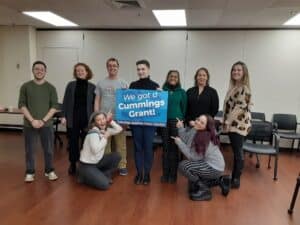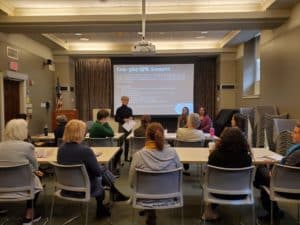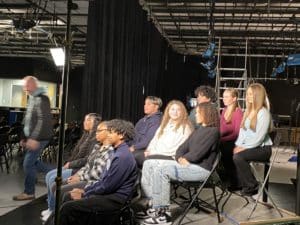First Presentations to North Andover High School
This week we presented to students at North Andover High School for the first time and trained Gloucester community members at YOUnity Drop In Center in QPR. We also held our 3rd session of support circles for 8th graders at Galvin Middle School in Wakefield, focusing on different types of stress and managing reactions through a few interactive games.
Peer Mentor Training at Massasoit Community College
This week our team trained 6 new Peer Mentors at Massasoit Community College! We’re so excited for them to join our team and share their comeback stories at schools across Massachusetts.
Presentations to 298 Students in Chelmsford and Burlington
This week we presented to 119 students at Chelmsford High School and 179 students at Burlington High School. Our Peers spoke about what finding mental health support looks like outside of high school to graduating seniors at Burlington and sparked great conversations around support for adults!
The NAN Project Featured on WBZ
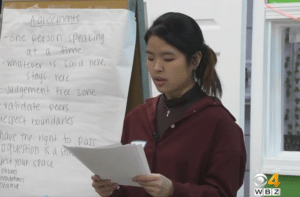
QPR for Metco Staff in Lexington
This afternoon our team presented QPR to Metco staff in Lexington. The conversation about how to identify signs of potential suicide risk and how to support youth was so encouraging!
Job Skills Workshop with Youth Elemento Access Center
Today, two of our staff joined YouthElemento‘s Spanish Job Skills Workshop, where they shared some mental health resources in Spanish!
The NAN Project Highlights Resources for Black Youth
On February 10th, 2023, The Center for Disease Control released “Notes from the Field: Recent Changes in Suicide Rates, by Race and Ethnicity, and Age Group – United States, 2021”. The data shows suicide rates increased by 19.25% during 2018-2021. For persons aged 10-24 suicide rates showed a worrying increase and, more specifically, among black youth aged 10–24 years, the rate of suicide increased 36.6% during 2018–2021. We highly recommend reading this report which can be found here: https://www.cdc.gov/mmwr/volumes/72/wr/mm7206a4.htm.
The overall message we gather from this research is that suicide continues to be a public health issue, and continues to be an increasing threat to black youth across the country.During this Black History Month, we highlight three resources we rely upon to continue our education in pursuit of racial justice, inclusion, and suicide prevention for black youth across Massachusetts.
 ★The Steve Fund: https://www.stevefund.org/
★The Steve Fund: https://www.stevefund.org/
During our Peer Mentor presentations, we distribute resource cards that can fit inside a wallet or behind a phone case. We tell students to carry them everywhere they go so they can be prepared with a plethora of mental health resources for themselves or a friend at any time. On this card, we have The Steve Fund.
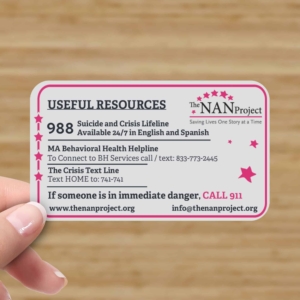
Front of Resource Card
The Steve Fund is the nation’s leading organization for young people of color with the overarching goal of creating a “robust national dialogue” centered on young people of color and their mental and emotional health and well-being. The Fund has a plethora of resources through their “Knowledge Center” located on their website. During our presentations, we highlight the Crisis Text Line service that connects young people of color to a culturally competent crisis counselor. Just text STEVE to 741-741 and someone will be on the other line in no time! The Steve Fund has partnered with the Crisis Text Line to provide this service 24/7, meaning any time of day or night a young person can reach out with questions about their own mental health, a friend’s health, and/or if they have general questions about mental health.
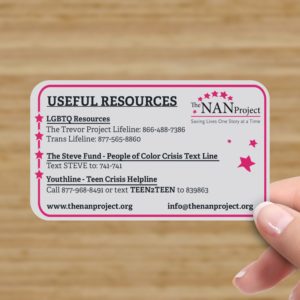
Back of Resource Card
The Fund also has a podcast “Speak On It!” that you can find at this link: https://www.stevefund.org/speakonit/. The podcast brings students and professionals together to discuss topics related to mental health and the challenges that Black, Indigenous, and People of Color may face during their academic and professional careers. We cannot recommend The Steve Fund enough!
 ★ National Queer and Trans Therapists of Color Network: https://nqttcn.com/en/
★ National Queer and Trans Therapists of Color Network: https://nqttcn.com/en/
The National Queer and Trans Therapists of Color Network describes themselves as: “a healing justice organization that actively works to transform mental health for queer and trans people of color in North America”. Since May 2016, NQTTCN has been building a network of mental health practitioners as well as a Mental Health Fund for those in need of financial assistance. The Founder, Erica Woodland, created this organization as a call to mental health practitioners to deepen their understanding of healing justice and create communities of care with, and an understanding for, Queer and Trans People of Color (QTPOC). They share resources for organizations seeking to uplift QTPOC communities through healing justice initiatives. A unique feature offered through their website is a directory of practitioners that you can search by region. And, if you are a therapist or provider that identifies as a QTPOC and are a licensed mental health professional, you can fill out an online application to become part of the directory! The directory can be found here: https://nqttcn.com/en/mental-health-directory/. The NQTTCN is doing invaluable work for communities of Queer and Trans people of color who are at unique risk of violence and suicide. Please check them out and support their work if you can!
★Year Up: https://www.yearup.org/
Year Up is an organization striving to “close the “Opportunity Divide” by ensuring young people gain the skills, experiences, and support that will empower them to reach their potential through careers and higher education”. Year Up offers a three step program that allows young people to work closely with expert instructors to gain career-building knowledge while being in close contact with a team of support to ensure success and offer mentoring along the way. Supporting young people start and advance in their careers while being assisted by a mentor creates protective factors; factors that contribute to a person’s ability to maintain their mental health and reduce their risk of suicide. Being part of a community that wants to see them succeed, creating financial stability, and inspiring hope for the future has been proven to prevent suicide. Year Up’s program “Black Opportunity Alliance” creates a platform for Black philanthropists to help cultivate the future of black leaders. With 35% of Year Up’s young people are black, having the support of older, Black business-people and philanthropists encourages and financially supports a younger generation of black youth to achieve their career goals. You can find more information on the program here: https://www.yearup.org/blackopportunityalliance.
We are inspired by Year Up’s unrelenting commitment to diversity, equity, inclusion, and belonging. Creating a focus on these key themes contributes to the longevity of youth in this program and their future success. Read more about it here: https://www.yearup.org/about/commitment-to-diversity. Check out Year Up and support them in whatever way you can! Supporting this organization means supporting black youth pursuing their career goals and building hope for the future!
We have gathered three amazing resources that we utilize to inform our work and create a world where all are able to thrive and create hope for the future. But the list does not end here! What resources do you use to educate yourself and continue the work of destigmatizing mental health challenges? Share them with us! It is our responsibility as stewards in the field of mental health and in destigmatizing mental health to maintain a racial and intersectional lens.
Our team is committed to educating and raising awareness in order to amplify voices that are both historically and too often underrepresented, denied, and disbelieved.
Coaching Day with Hannah Mell
At today’s coaching day, we were joined by Hannah Mell– a social worker and close friend of The NAN Project–who led us in some activities around understanding when we need help, how to communicate these needs, and how to apply these skills in the workplace.
Presentations to 277 in Framingham and Wakefield
This week our peers presented to students at Joseph Keefe Technical High School in Framingham, it was great to answer questions about seeking support and using positive coping strategies. Our team also trained librarians at the Wakefield’s Lucius Beebe Memorial Library in QPR: Question, Persuade, Refer: Suicide Prevention training and shared comeback stories to students at Galvin Middle School in Wakefield to assist in their SOS: Signs of Suicide training.
Boston 25 News on Kids and Mental Health
Check out this Boston 25 News segment showcasing students from La Colaborativa in Chelsea, Wake Up Youth Action Team in Wakefield, and GHS Mental Health Ambassadors in Gloucester talking about mental health in their communities. We were happy to help these young people share their experiences and we’d like to give a big thank you to Kerry Kavanaugh for making this possible!
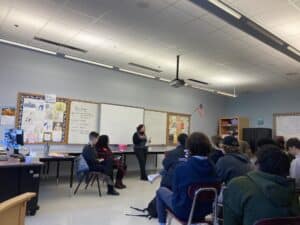
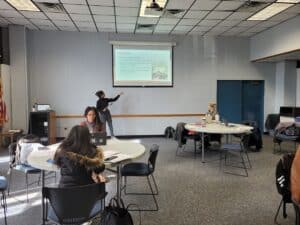
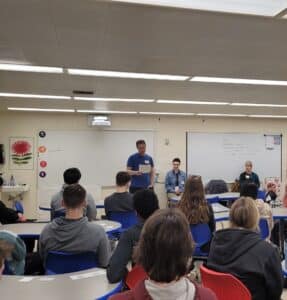
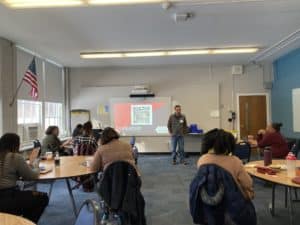
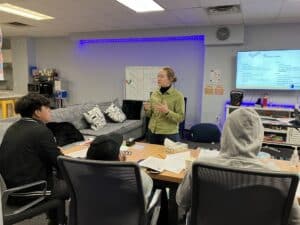
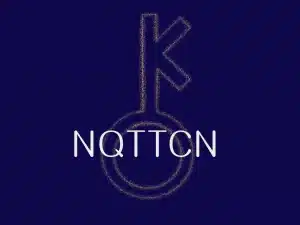 ★ National Queer and Trans Therapists of Color Network:
★ National Queer and Trans Therapists of Color Network: 
